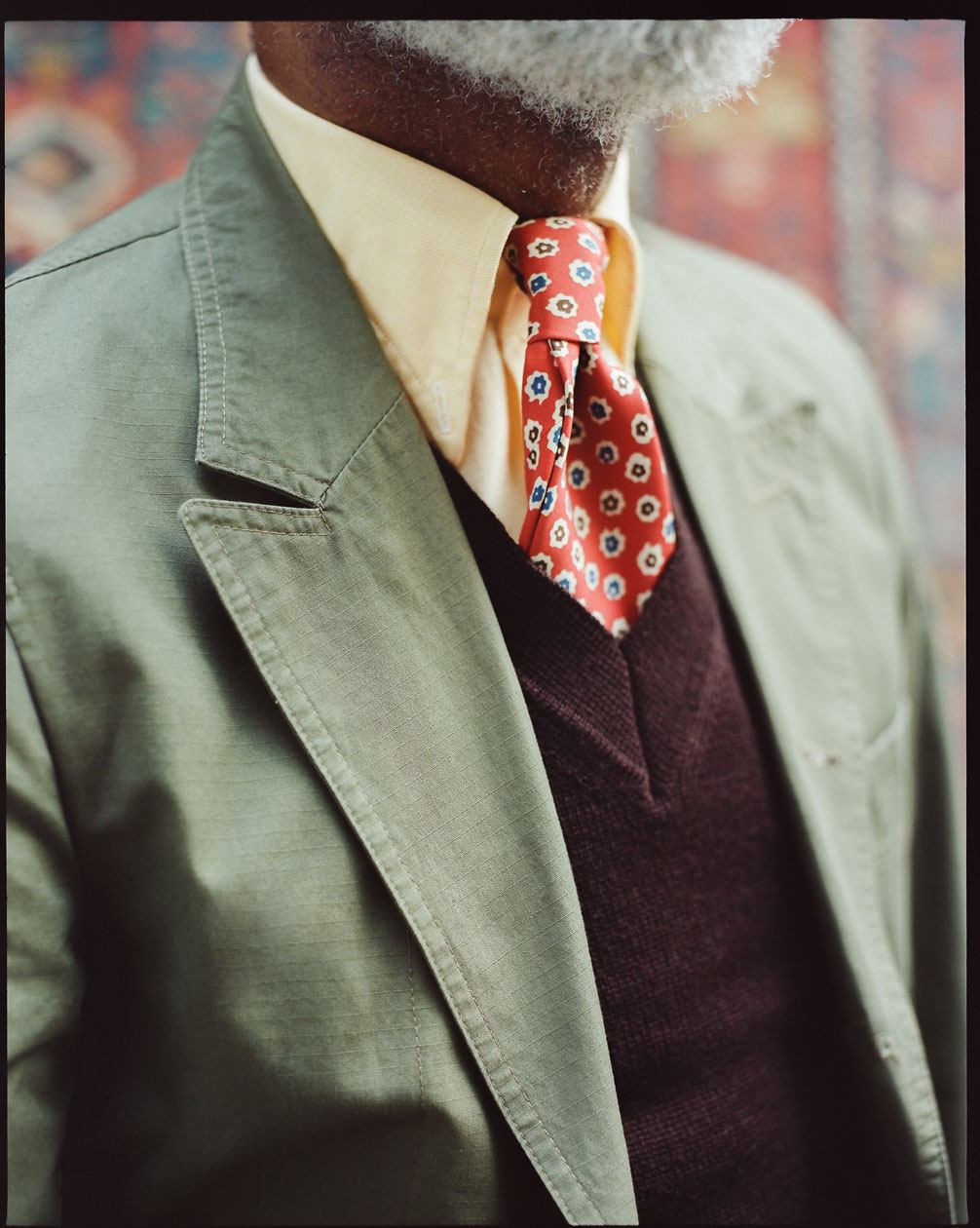2020ClothingKnitwear
Viva the V-Neck
By G. Bruce Boyer
Jul 13, 2022

After a spell in the fashion wilderness, the v-neck jumper is once again an essential asset to one's wardrobe. Just ask Mr. Boyer.
I’m not quite sure why v-neck sweaters seem to have disappeared for a while, but they did. While sweaters seemed to take a tumble generally this past decade, except for the trad Shetland crewneck and the roll neck variety, v-necks took a particular hit. I’m at a loss to explain why. The crewneck and roll neck remained because they nicely accompanied the brawnier look of prole street gear that’s so much seen, you know, parkas, commando boots, cargo pants, and beanies. And a nice city casual look it is too.
But now that there’s a more urbane look on the horizon, knitwear is taking a slightly more discerning approach. The first entry into this genre – a classic category for Drake’s – was the sleeveless cardigan. In cashmere or lambswool, this natty knit has been resurrected from its position as a country house essential in the rustic revival of the 1930s and shown to be both highly functional and highly handsome under sports jackets – very dulce et utile, as my Aunt Gladys used to say – the stylish approach in an array of colours from purple and grass green to canary, crimson, peacock and petrol, in addition to the trad shades of camel, grey, and navy.
Now in line to make its debut is the v-neck pullover. I’m sailing just a bit into the shallows of my mind here, but I think the v-neck sweater must have been first designed to replace a waistcoat in the late 19th century for sports such as tennis, cricket, golf, and bicycling. There were roll necks and crewnecks around, but the v-shaped neckline was purposefully fashioned to allow neckwear to be shown. I know it sounds silly that men would wear a tie for sports, but it’s true.
From there of course the v-neck was accepted into the more casual wardrobe of tweed jacket and flannels for all of the 20th century as a replacement for a waistcoat under a suit or sports jacket. If the weather turned slightly warmer or an even more casual look was called for, the coat could be discarded and the tie replaced by a scarf. As The Handbook of English Costume in the 20th Century: 1900-1950 makes clear in its entry for “Sweaters”:
Long sleeved jerseys worn for sports, etc. Generally a roll or polo collar (a close fitting turn-over round neck). 1902: “Early morning on the way to the morning dip youths in garments loose … sweaters, flannel trousers and canvas shoes.” Tailor and Cutter.
In 1912 also figured with a low turn-down, pointed collar. Later with V neck. [p.271]
It’s the versatility and comfort of the garment that wins the day. There’s the redoubtable cricket sweater of course, with its thick, cream-coloured, cable patterned wool and club colours banding the waist and neckline, but that’s a purely sporty look that’s difficult to bring easily into a less casual world. But the v-neck, in lambswool, merino, cashmere, or even Shetland can be more accommodating to suits and jackets. Like so many other dress inventions, it was the then Prince of Wales who in the 1920s convinced The Bright Young Things that v-neck jumpers were perfect for the sports field, the country house wardrobe, and finally into town. He wore them in everything from Fair Isle wool to silk.
Today the versatility remains. Whether it’s a tweed or corduroy sports jacket, covert or cavalry twill suit, or a slightly refined barn coat, the v-neck pullover makes a soft statement of style with a tattersall shirt or oxford button-down worn with a tie or scarf at the neck. It’s an arguably subtle note, but then real style tends to read between the lines.



